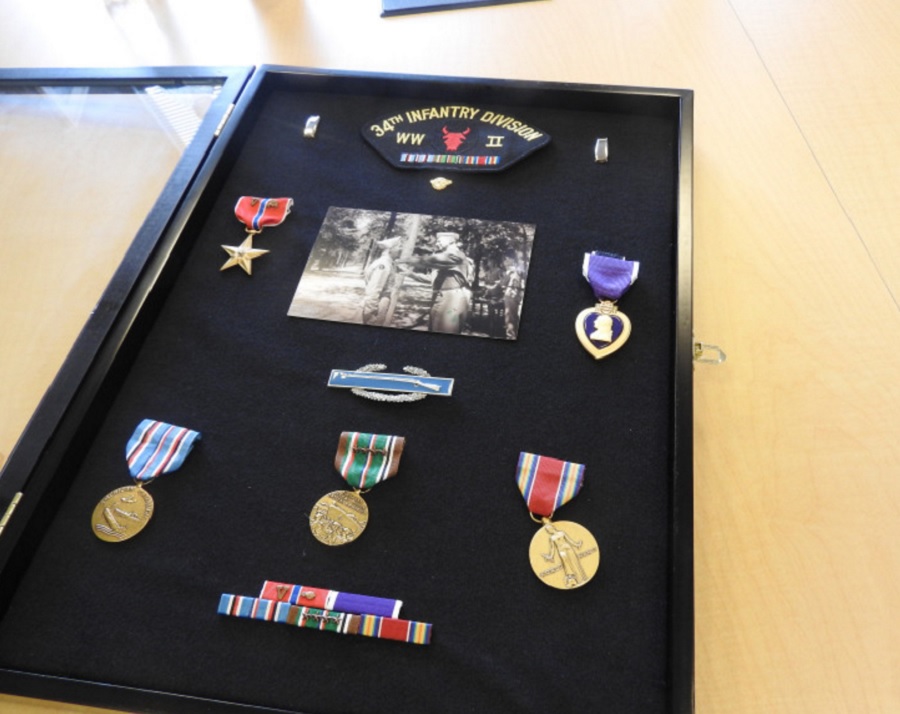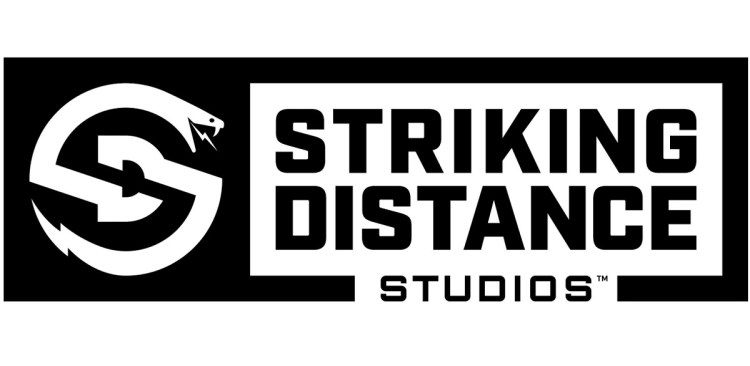I had a nice conversation with Glen Schofield, the former co-head of Sledgehammer Games and now founder of Striking Distance Studios. I asked him if he was making “Call of Dead Space,” referring to the past franchises that he worked on in his storied career.
“You’re trying to get me to say what I’m making,” Schofield replied.
While he couldn’t talk about that just yet, Schofield chatted about something that is relevant to a lot of game developers and publishers right now. And that’s how to build a large studio with dozens of employees in the middle of a pandemic.
Schofield left Activision’s Sledgehammer Games studio last year. There, he had run a studio with Michael Condrey and made games such as Call of Duty: Advanced Warfare and Call of Duty: WWII. Before that, they had created Electronic Arts’ Visceral Games studio and made the Dead Space games. After starting anew on his own, Schofield lined up funding from PUBG Corp., the maker of PlayerUnknown’s Battlegrounds, which has been downloaded more than 600 million times.
June 5th: The AI Audit in NYC
Join us next week in NYC to engage with top executive leaders, delving into strategies for auditing AI models to ensure fairness, optimal performance, and ethical compliance across diverse organizations. Secure your attendance for this exclusive invite-only event.
Schofield picked his hometown, San Ramon, California, for his new studio. He had just started moving his dozens of new employees into a new headquarters in the suburban city of the East Bay Area region, a couple dozen miles away from San Francisco. They found a place nine months ago and started moving in on March 1. But just a couple of weeks later, the company had to dismantle the office and send everyone home, Schofield said in our interview.
The building has a motion-capture studio, but the team can’t use it yet, as that involves a lot of people working closely together. And it’s not the kind of thing you can do at home, with everyone isolated. But Schofield said the company made three offers for jobs last week, and he is still hiring. They don’t need the mo-cap studio for a while, and they can get by working individually and using online video calls. The day starts with a 15-minute Zoom call for the whole team.
“We saw this coming and we had a couple of days where we told everybody to practice working from home,” Schofield said. “They came back and told us what they needed and what wasn’t working. We had our network guys fix things. We got cameras. Now we are getting underway, and starting to build.”
Schofield will give a solo talk about creativity in games at our upcoming GamesBeat Summit Digital online-only event on April 28 and April 29.
Here’s an edited transcript of our interview.

Above: Glen Schofield is the founder of Striking Distance Studios in San Ramon, California.
GamesBeat: How much are you revealing at this point?
Glen Schofield: Not a heck of a lot. We’re talking more about building the studio. People have been asking about how we’re able to work at home.
GamesBeat: What does the name mean?
Schofield: I was having a conversation with Steve as we were starting to come up with names. He was asking me, “What do you want to do with games? What do you want to do with the game we’re making and the studio we’re making?” I said, “I always want us to be within striking distance of greatness.” All of a sudden it clicked in our heads. Maybe there’s something there. We checked, and we were able to get Striking Distance. It makes sense. It was a discussion that’s near and dear to our hearts. Trying to make something that’s quality.
GamesBeat: Is this triple-A, as far as where the focus is? Is there any nuance as far as what people understand to be triple-A?
Schofield: We’re making a triple-A experience, yeah. We’re making a narrative experience. We’re working on the story right now, working on design. A lot of concept art coming in. It’s definitely about making a triple-A style of game.
GamesBeat: Do you have a building somewhere yet?
Schofield: Yes, and we just moved in three weeks ago. Two weeks ago we had to clear out. Since I’ve done this before, I was able to get us a place, pick out a place eight or nine months ago that I really liked here in San Ramon. We were able to get our designer and architect early and move in March 1, March 2. Then a week later, two weeks later we moved back out. We built a state of the art studio. It’s beautiful. As soon as we can, we can have you come over and check it out. We built a mocap studio. We’re the only game company on the East Bay and the only mocap studio in the whole bay area aside from ILM.
GamesBeat: How many people are there now?
Schofield: We have more than 70. We’re quickly approaching 80. We still have a lot of hiring to do, 40 or 50 more people, in all kinds of disciplines. We’re hiring even through the work from home time period. As a matter of fact, we made three offers this week. We’re still interviewing people through Zoom and that sort of thing.
GamesBeat: Is the team still pretty concentrated around San Ramon, or were you spread out anyway?
Schofield: One of the reasons I moved it to San Ramon, besides the fact that I found a great place and that it happens to be my hometown, is that I knew of a lot of great developers who lived in the East Bay and traveled to Silicon Valley every day. That’s a long haul, and it gets worse and worse. It was an easy choice to pick the East Bay as a new hub. We’ve gotten a lot of publicity from the local area for bringing in the video game industry and high tech to the region, which has been nice.
GamesBeat: So Condrey gets the west side, and you get the east side.
Schofield: Yes, we’ll take the East Bay.

Above: Call of Duty: WWII
GamesBeat: Is it different starting up on your own like this, without someone you partnered with for a long time? What’s different?
Schofield: The first thing I went out to do was to hire my C staff. My first hire was Steve Papoutsis as my chief development officer. He took over the Dead Space franchise when I left EA, and then he took over the studio, Visceral Games, after I left. He ran Visceral for probably six or eight years there. He and I were good friends beforehand. When I left EA I had recommended Steve to be the new GM. Then I hired a COO and a CTO and a chief creative officer.
Now that we had the core of the team, we could all branch out into the areas we knew and bring in people we knew. Everyone was from the game industry. Everyone had 20 years of experience on my C staff. Right now, even with 70-something people, I think the average development time in the game industry is 14 years. We’ve hired a very senior team. We’re bringing in less experienced people now, because you need all different experiences.
I learned a lot putting together Sledgehammer. Where to get the equipment, the people, all kinds of things. It made building Striking Distance a lot easier.

Above: Glen Schofield’s grandfather was in the 34th Infantry Division and earned a Purple Heart.
GamesBeat: So, you’re making Call of the Dead Space now?
Schofield: There you go! You’re trying to get me to say what I’m making. I’m not gonna do it. Can’t do it just yet. But you know me, I’d love to talk about the creative as much as possible. We’ve only been working on the game about seven or eight months. Most of it coming up with mechanics, and a lot of story. We have a couple of great story people. We have people from every discipline now, so we’re getting underway and starting to build stuff. The underlying technology as well.
GamesBeat: Game technology has moved to the point where you can function remotely.
Schofield: We kind of saw this coming, that we were going to have to work at home at some point, or at least we thought we did. We had a couple of days where we told everyone to work from home, like a Thursday and a Friday, and we practiced working from home. People came back on that Monday and let us know what equipment they were missing or what wasn’t working. We had our network guys fix everything. We went out and got whatever equipment, in most cases cameras. We secured and encrypted all the PCs for everyone who wanted to bring a PC home. We were ready when we shut down the studio, and we’re 100 percent up and running.
We meet every day for 15 minutes, all on Zoom. We have 70-something people up on Zoom. We talk about blockers and what’s not working and what is working. We’re able to continue to build the game. There’s going to be some things that take a hit a bit. We don’t need it yet, but when we get into the motion capture studio — luckily we did some motion capture earlier, so that gets us going. Of course we’re not going to bring actors up for a while. Hiring is a bit more difficult. But we’ll get up and running.

